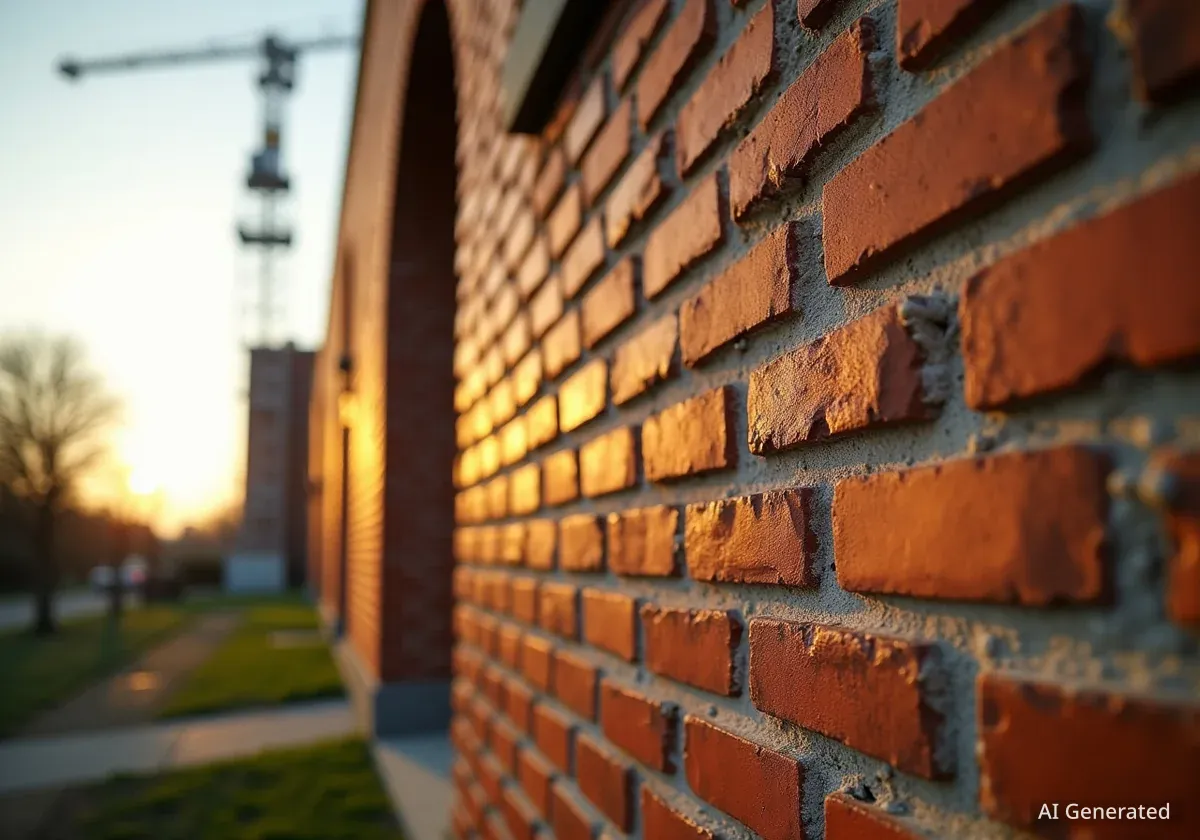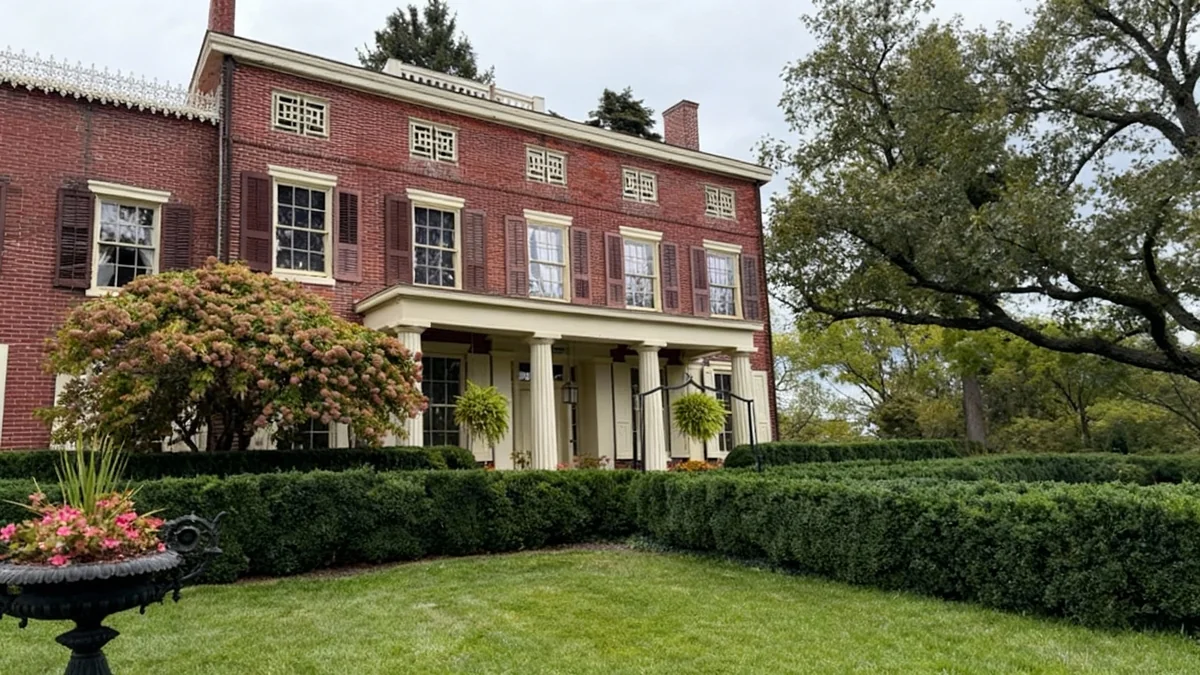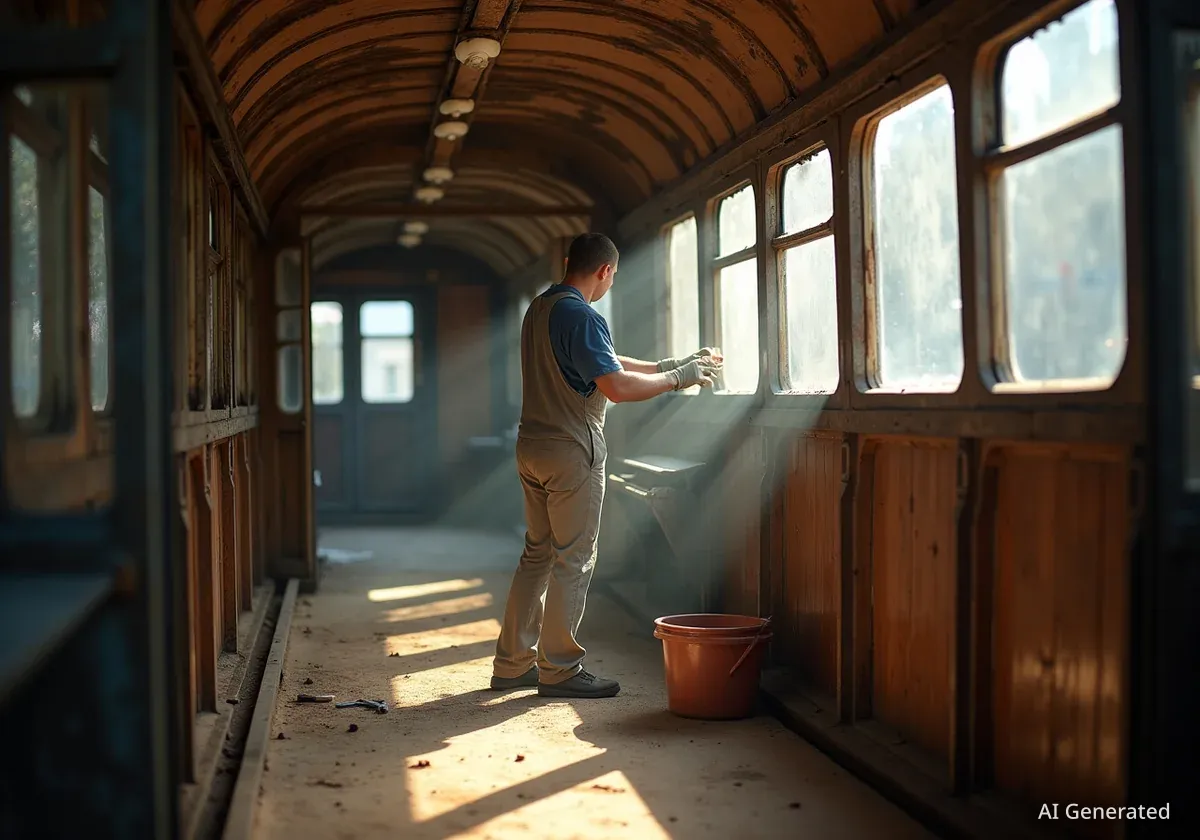A significant piece of Charleston's industrial history has been preserved for future generations. Developers and city leaders have announced the completion of a major restoration project on the facade of the historic Bennett Rice Mill, a structure that has stood in the Union Pier area for 180 years.
This marks the first complete restoration and stabilization of the facade since it was severely damaged by a hurricane in the 1960s. The project brings new life to a landmark that represents a key era in the city's economic past and is a cornerstone of the broader Union Pier revitalization effort.
Key Takeaways
- The facade of the 180-year-old Bennett Rice Mill in Charleston has been fully restored.
- This is the first complete restoration since the structure was damaged by Hurricane Donna in 1960.
- The project is part of a larger revitalization plan for the Union Pier property.
- The mill is considered a prime example of 19th-century American industrial architecture.
A Landmark Reclaimed from Ruin
The Bennett Rice Mill, originally constructed in 1844, was once a hub of activity in Charleston's bustling port. Commissioned by South Carolina Governor Thomas Bennett, it was one of the most productive rice mills in the nation despite being the smallest of the three in the city.
However, the 20th century was unkind to the structure. Hurricane Donna in 1960 caused catastrophic damage, leaving only the western facade standing. What little remained was further battered by Hurricane Hugo in 1989, leaving the architectural remnant in a precarious state for decades.
A History of Resilience
The Bennett Rice Mill was built during the peak of South Carolina's rice production era. After the Civil War, the rice industry declined, and the mill eventually closed. The property was acquired by the South Carolina Ports Authority in 1958, just two years before Hurricane Donna nearly erased it from the landscape.
For over 60 years, the skeletal facade served as a silent reminder of both Charleston's industrial prowess and the power of nature. Previous efforts had stabilized the structure, but this new project represents the first comprehensive effort to fully restore its architectural integrity.
The Intricate Process of Preservation
Bringing a 180-year-old brick facade back from the brink of collapse was a complex undertaking. Engineers and preservation experts faced the challenge of working with historic materials that had been exposed to the elements for more than six decades.
Jonathan Sigman, the lead engineer on the project, noted the structure's long period of deterioration. "The structure was constructed in the 1840s and was severely damaged by a hurricane in the late 1950s," he explained. "The port stabilized the structure then, but had not performed a full restoration of the structure until this project."
The restoration team began with a detailed structural assessment to understand the full extent of the damage and the stability of the remaining wall. This involved analyzing the original construction techniques and the impact of decades of weather exposure. The goal was not just to repair the facade but to ensure it could stand for another century and beyond.
Architectural Significance
The South Carolina Ports Authority has described the mill's facade as one of the finest surviving examples of 19th-century American industrial architecture. Its restoration preserves a tangible link to the city's economic and social history.
The project required specialized masonry techniques and materials compatible with the original 1840s construction. Every brick and joint was carefully inspected, with damaged sections repaired or replaced using methods that respect the building's historical character.
A Catalyst for Union Pier's Future
The restoration of the Bennett Rice Mill facade is more than just a single preservation project; it is a pivotal first step in the ambitious redevelopment of the entire Union Pier property. This area of downtown Charleston has been targeted for a major revitalization that aims to blend historic preservation with modern urban development.
By saving this historic landmark, developers have set a tone for the rest of the project. It signals a commitment to honoring Charleston's unique heritage while creating new spaces for residents and visitors.
"Our team performed a detailed structural assessment of the facade... The project brought life back into the Charleston landmark."
The stabilized facade will now serve as an architectural centerpiece for the new Union Pier, potentially incorporated into future buildings or standing as a monument to the area's past. This approach, known as adaptive reuse, is a popular strategy in historic cities for breathing new life into old structures.
What Comes Next for Union Pier
With the facade now secure, attention will turn to the broader plans for the surrounding waterfront property. The revitalization aims to create a mixed-use neighborhood with public access to the water, green spaces, and new residential and commercial buildings. The Bennett Rice Mill will be an integral part of this new landscape.
The successful completion of this challenging restoration provides momentum for the larger development. It demonstrates that even severely damaged historic structures can be saved and integrated into the fabric of a modern city. For Charleston, it is a victory for preservation and a promising sign for the future of its historic waterfront.





